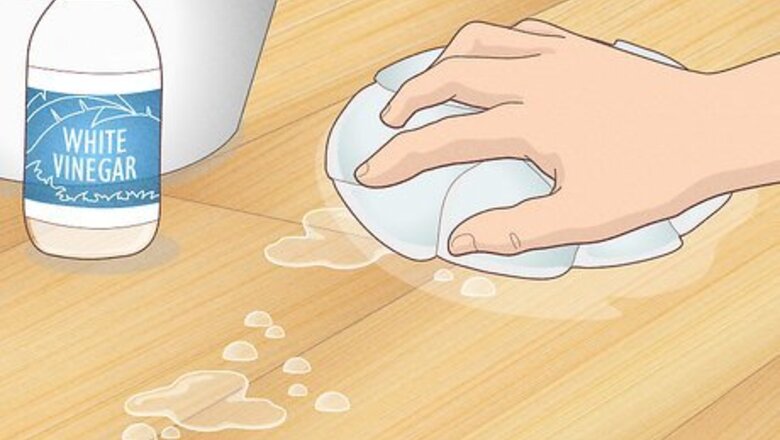
views
- Mop with a mixture of 1 c (240 mL) of white vinegar and 3 US gal (11 L) of warm water to safely and effectively clean your floors.
- If your floors have an unsound finish (meaning they absorb water), use mineral spirits to clean them, instead.
- Sweep your floors regularly, or use the bare floor setting on a vacuum. Use a dull putty knife to remove stuck-on gunk.
- If your floors are severely scratched or damaged, screen or sand them with a buffer or a sander, then apply a new finish.
Mopping and Cleaning Spills
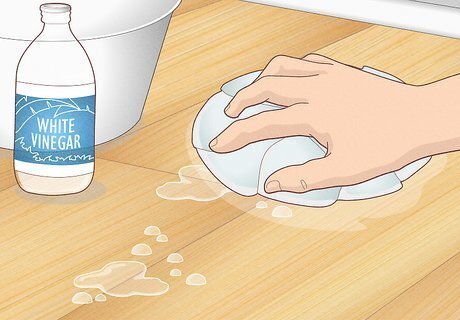
Use a vinegar mixture on sound finishes. To see if your finish is sound, apply a few drops of water in a worn area. If the water beads for a few minutes, the finish is sound. Then, make a mixture of 1 c (240 mL) of white vinegar and 3 US gal (11 L) of warm water. Dip a terry cloth mop head or a terry cloth hand towel into the solution, then wipe down your floors with it. Try mixing castile soap into water as an alternative to vinegar. Never use products made for vinyl or tile on wood floors. The chemicals in those products can dull the floors and remove shine. Avoid cleaning with ammonia or lemon juice, since the acidity can damage old wood. Avoid using a steam mop to clean old hardwood floors. Steam can warp or damage hardwood flooring over time.

Use mineral spirits on unsound finishes. To see if your finish is unsound, sprinkle a few drops of water in a worn area. If the water absorbs into the floor after a few minutes, your finish is unsound. It's best to clean a floor with an unsound finish with odorless mineral spirits. Dampen a terry cloth towel and wipe down the hardwood floors, then let the floor dry. Mineral spirits can cause irritation. Always wear gloves and goggles, and ventilate the area while cleaning. You can clean your floors with mineral spirits as often as you’d like. Mineral spirits don’t damage wood. Avoid using water-based cleaning products on an unsound finish. Since your floor absorbs water, using a water-based product can cause the wood to warp.

Wipe up spills as soon as possible. Coffee, ink, paint, and pet messes are just a few materials that can cause long-term stains. Wipe up these and other spills immediately to prevent stains from setting. Use a slightly dampened cloth and avoid over-saturating the floor with water. Even small things, like letting an ice cube melt on the floors, can cause stains or warping over time. For pet stains, mix a 1:1 solution of white vinegar and water, then use a sponge to spread the solution onto the stain. Let the mixture sit for 5 to 10 minutes, then clean it up with a dry towel. If your finish is unsound, be sure to wipe up the mixture right away to avoid letting it soak into your floors.
Sweeping, Vacuuming, and Scraping
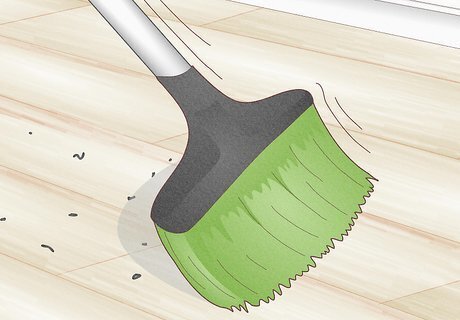
Sweep your floors with a soft broom. Daily maintenance will help keep old hardwood floors in the best shape. Sweep or dust them daily to remove dirt, dust, pet hair, and other debris. Be sure to sweep in the direction of the wood grain to prevent dirt and grime from getting stuck in cracks between planks. A microfiber towel is also great for removing dust.
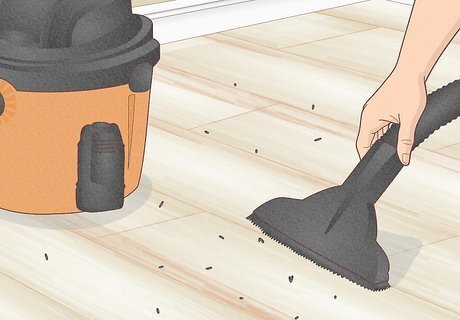
Vacuum using the bare floor setting. Vacuuming your hardwood floors will get rid of dust and dirt between the floorboards (and usually it’s faster than using a broom). Put your vacuum on the bare floor setting to avoid scratching your hardwood. Or, use a hose attachment with a soft bristled brush.

Scrape away dried paint, gum, and other petrified materials. Older hardwood floors are often spotted with caked, petrified materials, like dried paint, over-waxed deposits, or gum. If it was covered by linoleum or carpet, bits of the covering and adhesive might still be present. Hand scrape any of these materials with a dull putty knife. If you have trouble, try placing a plastic bag filled with ice cubes on top of the gum or wax. Let it sit for a few minutes, then try scraping it off the floor.
Refinishing Hardwood Floors

Test your floors to see if they’re waxed. Unless you know your floors are unwaxed, you'll need to test for wax in order to know how to best care for your flooring. Dampen a piece of extra fine steel wool and use it to rub areas you think might be waxed. Wax will show up as a light gray smudge or smear on the steel wool. Floors that date prior to 1930 typically have many layers of paste wax over a tung oil finish or shellac.

Screen your floors if they aren’t that damaged. Screening your floors takes off the first layer of finish without touching the wood underneath. If your wood floors don’t look that bad, rent a buffer from a hardware store and seal all the doors to the room. Then, attach a 60-grit screen to the buffer and go over your entire floor. Work your way from 60-grit to 80-grit to 100-grit, going over the whole floor each time. Always wear a respirator while screening your floor. Inhaling the dust can be dangerous. Buffing will not remove deep scratches or heavy damage. It will, however, take care of water stains, scuff marks, and scratches.

Sand your floors if they are scratched or damaged. Sanding your floors removes the finish and some of the wood, too. To sand your floors, rent a drum sander from the hardware store and seal off the doors to the room. Start with 60-grit sandpaper and move the sander in the direction of the grain, making 2 passes over the entire floor. Move to 80-grit and then finish with 100-grit. Wear a respirator while sanding your floor. For corners and grooves, use a handheld sander. Sanding will take care of deep scratches, oil stains, and damaged wood. If your floor is more than 50 years old, try to avoid sanding it unless it’s absolutely necessary. There's a limit to how much wood you can remove without permanently damaging the floor.
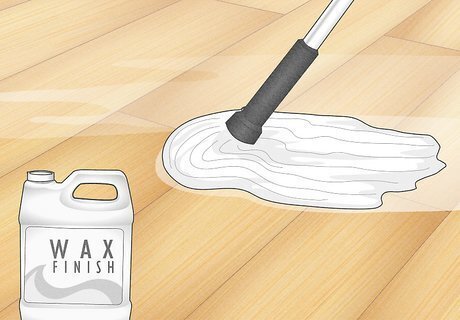
Apply wax if your floor used a wax sealer. Pour a wax finish into a bucket, then dip a clean mop into it. Gently rub the mop onto the floor in the direction of the grain to refinish your floor. Wait for the wax to dry overnight, then apply a second coat. Always wear gloves and a mask to protect yourself when waxing a floor.
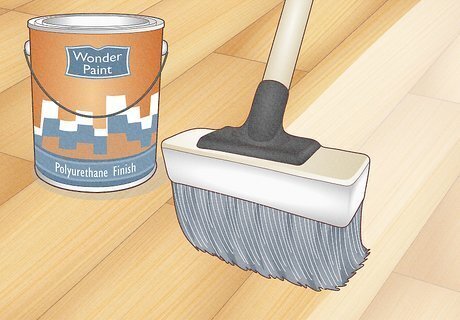
Use polyurethane finish on modern wood floors. If your floors were not waxed, they were likely finished with polyurethane. Dip a stain applicator brush into a can of polyurethane, then slowly spread it over the floor in the direction of the wood grain. Let the polyurethane dry for 8 hours, then apply a second coat. Always ventilate the room when using polyurethane.
















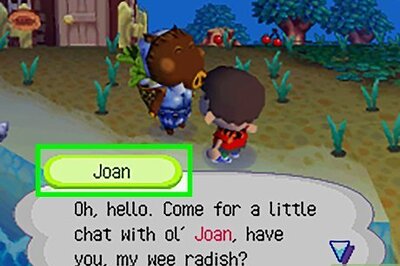
Comments
0 comment